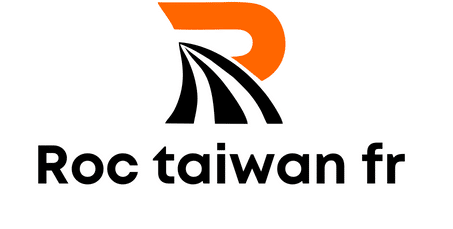How to Design Effective UI/UX for UK E-commerce Websites?

In the fast-paced digital world, where online shopping has become increasingly prominent, the design of your e-commerce website matters significantly. It can make the difference between a missed opportunity and a successful sale. In this article, we’ll explore how you can design an effective User Interface (UI) and User Experience (UX) to ensure that your customers enjoy every moment they spend on your site.
Understanding Your Users
Understanding your users is the first step towards designing an effective UI/UX for your e-commerce website. You must take time to gain a deep understanding of your customers‘ desires, needs, and behaviours.
Dans le meme genre : What Are the Tax Implications for UK Citizens Working Abroad as Digital Nomads?
Knowing Your Users
Get to know your users’ needs and wants by conducting market research, surveys, and interviews. By gaining insights into their behaviours, you will be able to create a design that piques their interest and meets their needs. Ensure your research covers a diverse range of users to capture a holistic view of your customer base.
Analysing User Behaviour
Observing and analysing user behaviour is an excellent way to understand how they interact with your ecommerce site. Utilise tools like Google Analytics to gather data on your users’ activities, such as their navigation paths, the time they spend on different pages, and what they search for. This data can provide valuable insights into what works and what doesn’t on your site.
Lire également : How to Optimize Your Small UK Business for Local SEO Success?
Providing a Seamless Navigation Experience
Simplicity is crucial when it comes to navigation. A site that is easy to navigate enhances the user’s shopping experience, increases engagement, and improves conversion rates.
Streamlining Site Navigation
Keep your site’s navigation simple and intuitive. The primary navigation bar should be clearly visible and include concise, descriptive labels for each category of products. Secondary navigation options, such as a search bar or filters, should be easy to find and use.
Optimising Search Functionality
The search function is an essential feature of any ecommerce website. It allows users to quickly find the products they’re looking for, improving their shopping experience. Ensure that your search feature is prominent, easy to use, and returns accurate results. Implementing advanced search functionalities, like automatic suggestions or filters, can further enhance the user experience.
Focusing on Mobile Design
With mobile internet usage surpassing that of desktops, it is increasingly important to ensure that your ecommerce site is mobile-friendly. A site that is not optimised for mobile can frustrate users and potentially drive them away.
Responsive Design
Implementing a responsive design ensures that your site functions optimally on all devices, from smartphones to desktops. Elements should resize and rearrange themselves depending on the screen size, ensuring a consistent user experience across all devices.
Mobile-Friendly Features
Integrate mobile-friendly features into your site. For example, large, easy-to-tap buttons are much more suited to touch screens than smaller, harder-to-hit targets. Also, keep in mind that too much text can be overwhelming on a small screen, so it’s best to keep it concise.
Creating a Secure and Trustworthy Environment
Security is paramount in ecommerce as customers need to feel safe when making transactions on your site. A secure, trustworthy environment will encourage customers to complete their purchase and return in the future.
Secure Transactions
Ensure that all transactions on your website are secure. Use trusted payment gateways and display security certificates prominently to assure customers that their personal and financial information is safe.
Establishing Trust
Establish trust by being transparent about your business practices. Display customer reviews and ratings prominently, and be upfront about shipping costs and return policies. Providing excellent customer service can also help to foster trust and build a loyal customer base.
Designing a Smooth Checkout Process
The checkout process is the final step before a customer completes a purchase. An effective checkout design reduces cart abandonment rates and increases conversions.
Simplifying the Checkout Process
A lengthy or complicated checkout process can discourage customers from completing their purchase. Simplify the process by reducing the number of steps and only asking for essential information. Offering guest checkout options can also help to streamline the process.
Offering Multiple Payment Options
Offer a range of payment options to cater to your customers’ preferences. The more convenient you make the payment process, the more likely customers are to make a purchase. Consider offering options like credit/debit cards, PayPal, mobile wallets, and more.
In conclusion, designing an effective UI/UX for your UK e-commerce website requires a deep understanding of your users, streamlined navigation, mobile-friendly design, security, and a smooth checkout process. By focusing on these areas, you can create an ecommerce site that not only attracts customers but also keeps them coming back.
Incorporating Social Proof and High Quality Content
To further enhance the user experience and boost your commerce website‘s credibility, integrating social proof mechanisms and high-quality content is an effective strategy.
Using Social Proof
Social proof plays an integral role in shaping online customers’ decisions. It includes elements like customer reviews, ratings, testimonials, and social shares that showcase the popularity and quality of your products. It serves as a validation of your product or brand from other consumers, which can influence potential customers to make a purchase. Hence, including social proof on your product pages and across your website can help foster trust and encourage purchases.
High Quality Content
High-quality content is essential for any ecommerce website. From product descriptions and blog articles to videos and images, every piece of content should be clear, informative, and engaging. High-quality content not only attracts and retains users but also promotes your products and enhances your brand image. It’s also vital for SEO, helping to improve your site’s visibility on search engines. Ensure that all images are of high resolution and that written content is free from errors and provides value to the user.
Leveraging Integrations and Advanced Features
Leveraging integrations with social media platforms and implementing advanced features can significantly enhance the user experience of your UK ecommerce website.
Social Media Integration
Integrating your online store with social media platforms can significantly enhance user engagement and increase sales. It allows users to share their favourite products with their social networks, potentially attracting new customers to your site. Also, you can use social media integrations to display user-generated content, such as customer photos or reviews, adding another layer of social proof to your site.
Advanced Features
Implement advanced features that improve the shopping experience for your users. For example, a "save for later" option allows users to bookmark items they’re interested in but aren’t ready to purchase. Also, personalised recommendations based on browsing and purchase history can make the shopping experience more personal and enjoyable, potentially boosting sales.
Conclusion
Designing an effective UI/UX for your UK ecommerce website is a multifaceted task that requires a deep understanding of your users and best practices in website design. By focusing on understanding users, providing seamless navigation, optimising for mobile devices, ensuring security, streamlining the checkout process, incorporating social proof, and leveraging integrations and advanced features, you can significantly enhance the shopping experience on your site. It’s about creating an environment where users feel understood, valued, and secure. By doing so, you can attract more customers, reduce cart abandonments, increase conversions, and foster a loyal customer base. Remember, a successful ecommerce design is one that not only looks good but also makes online shopping easy, enjoyable, and satisfying for the user.
